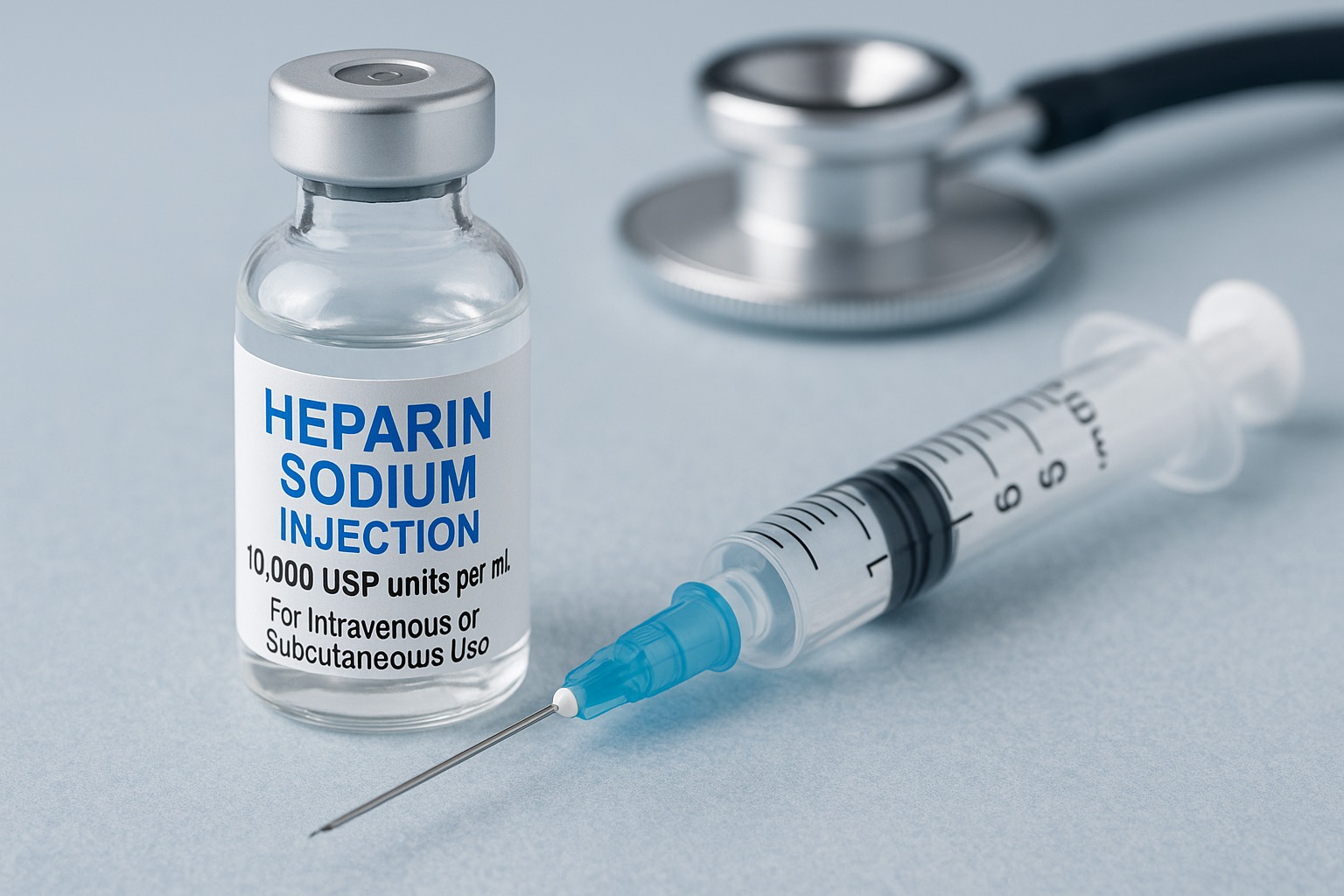Heparin injection is a widely used anticoagulant (blood thinner) prescribed to prevent and treat blood clots. Doctors often recommend it for conditions such as deep vein thrombosis (DVT), pulmonary embolism (PE), and during certain medical procedures to reduce the risk of clotting. Because of its fast-acting properties, heparin is commonly given in hospitals under medical supervision.
In this clear, patient-friendly guide, you’ll learn what heparin injection is, how it works, when doctors prescribe it, how it’s administered, possible side effects, safety tips, and answers to common questions people search online.
What Is Heparin Injection?
Heparin is a natural anticoagulant medicine that helps prevent blood from clotting too quickly. Unlike oral blood thinners, heparin works immediately after injection, making it useful in emergency and hospital settings.
Heparin injection is available in multiple forms and strengths:
- Heparin sodium injection (various concentrations, usually in IU/mL)
- Heparin lock flush solution (used to keep IV lines open, not for systemic anticoagulation)
How Does Heparin Work?
Heparin enhances the activity of antithrombin III, a natural protein in the blood that blocks clotting factors. By inhibiting these clotting factors, heparin slows down the clotting process and reduces the risk of dangerous clots forming in the veins, lungs, or heart.
Common Uses of Heparin Injection
Doctors may prescribe heparin injection for:
- Preventing and treating deep vein thrombosis (DVT) and pulmonary embolism (PE)
- Reducing clot risk in patients with atrial fibrillation
- During surgery or dialysis to prevent clotting
- As a bridge therapy when switching between anticoagulant medications
- Preventing clotting in catheters and IV lines (using low-dose flushes)
Dosage and Administration
The dose and frequency of heparin depend on the condition being treated and the patient’s weight.
- Route: Heparin can be given intravenously (IV) or subcutaneously (under the skin). It is not injected into muscle.
- Frequency: Some patients receive continuous IV infusions; others get injections every 8–12 hours.
- Dosage monitoring: Blood clotting tests (like aPTT) are often used to adjust dosing and ensure safety.
Important: Do not self-administer heparin without medical supervision. Only trained healthcare providers or patients properly instructed by their doctor should use it.
Side Effects of Heparin Injection
Like all medicines, heparin may cause side effects. Some are mild and manageable, while others can be serious.
Common side effects
- Pain, redness, or bruising at the injection site
- Mild bleeding (e.g., gums, nosebleeds)
- Itching or skin irritation
Serious side effects (seek medical help immediately)
- Heavy or unusual bleeding (blood in urine, black stools, vomiting blood)
- Severe headache, dizziness, or weakness (possible internal bleeding)
- Heparin-induced thrombocytopenia (HIT) — a rare but serious drop in platelets that increases clot risk
- Allergic reactions (rash, difficulty breathing, swelling)
Warnings and Precautions
- Pregnancy: Heparin is sometimes preferred in pregnancy because it doesn’t cross the placenta, but it must be used under close medical supervision.
- Surgery: Tell your doctor you are on heparin before any surgery or dental procedure.
- Other medications: Inform your doctor if you take aspirin, NSAIDs, or other blood thinners, as these increase bleeding risk.
- Medical conditions: Patients with bleeding disorders, uncontrolled high blood pressure, stomach ulcers, or liver disease need extra caution.
Storage and Handling
- Store at room temperature, away from heat and light.
- Do not freeze vials or prefilled syringes.
- Keep out of reach of children.
Frequently Asked Questions (FAQs)
Q1. What is the difference between heparin injection and low molecular weight heparin (LMWH)?
Heparin injection is standard (unfractionated) heparin, which requires close monitoring. LMWH (like enoxaparin) has a longer effect and usually does not need frequent blood testing.
Q2. Can I use heparin at home?
Yes, in some cases doctors train patients or caregivers to give subcutaneous heparin at home, but only under prescription and monitoring.
Q3. How fast does heparin work?
Heparin begins working within minutes when given IV and within 20–60 minutes when injected under the skin.
Q4. Can I drink alcohol while on heparin?
Alcohol can increase bleeding risk. It’s best to limit or avoid it while on heparin.
Q5. How long can I take heparin?
Treatment duration varies—some patients use it for a few days (e.g., post-surgery), while others may need longer therapy. Your doctor decides based on your condition.
Final Thoughts
Heparin injection is a vital anticoagulant that can save lives by preventing and treating dangerous blood clots. While effective, it must be used carefully under medical supervision because of the risk of bleeding and other side effects. Always follow your doctor’s instructions, attend regular monitoring, and report any unusual symptoms promptly.
By using heparin safely and responsibly, patients can reduce clot-related risks and improve health outcomes.


Leave a Comment